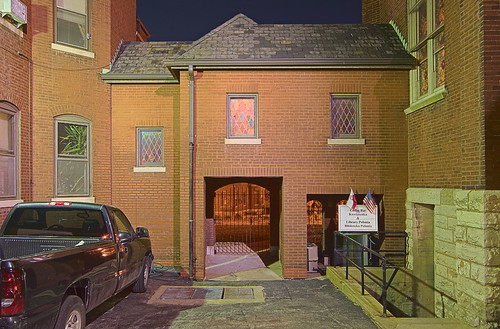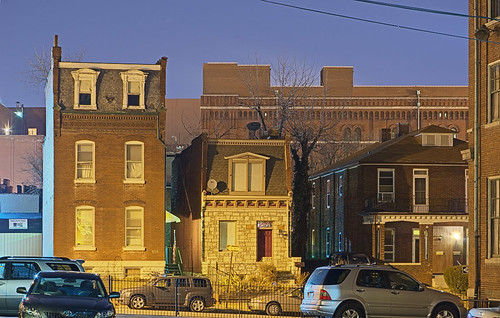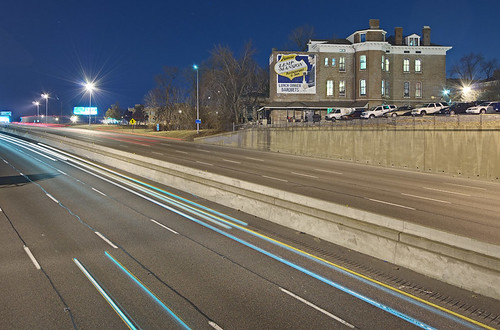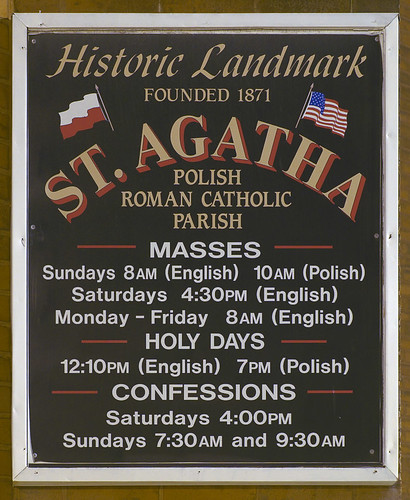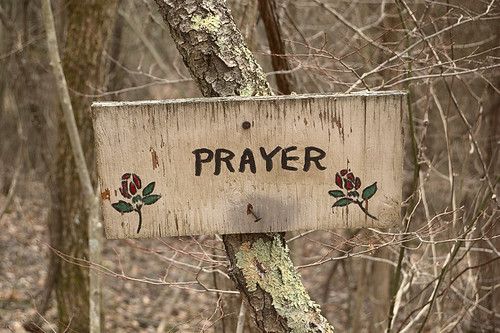
At the Black Madonna Shrine.
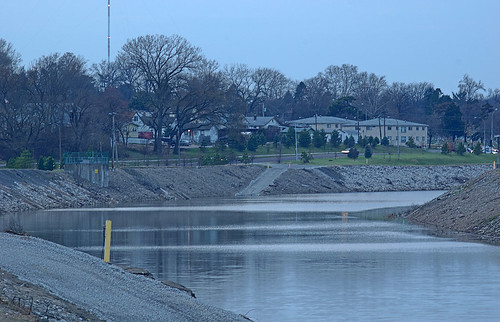




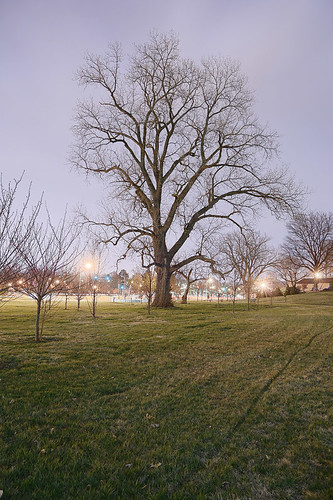

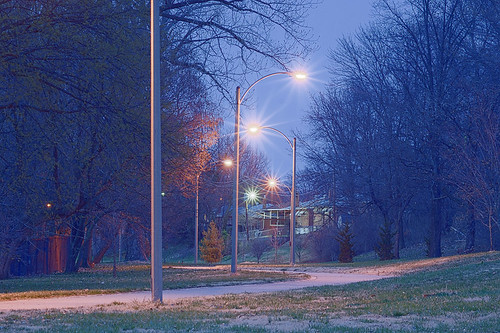





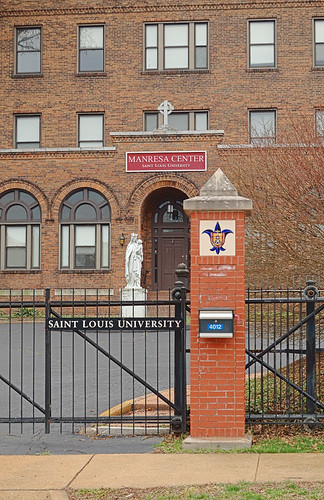
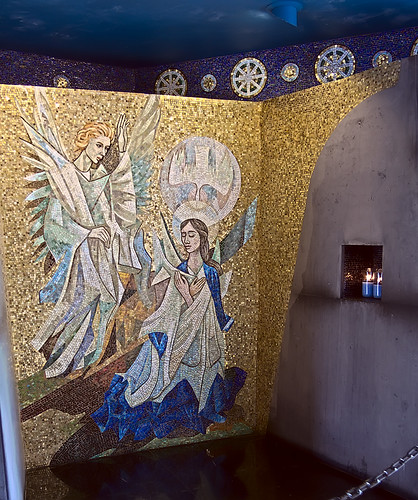


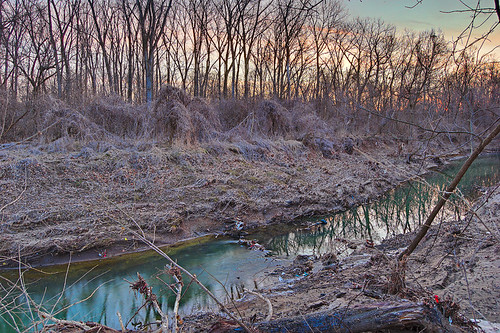



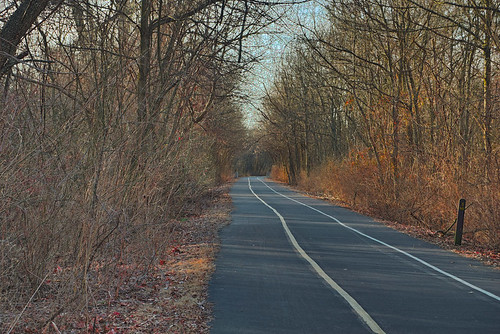





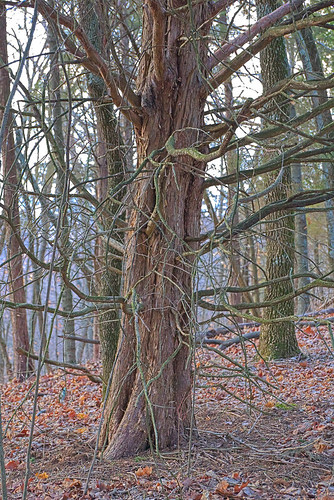
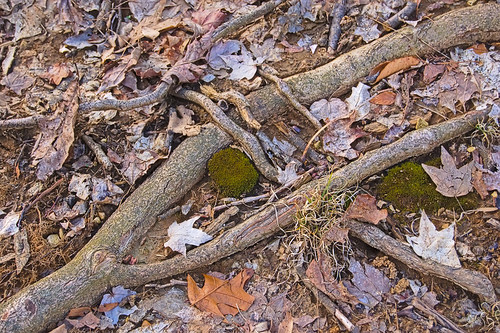
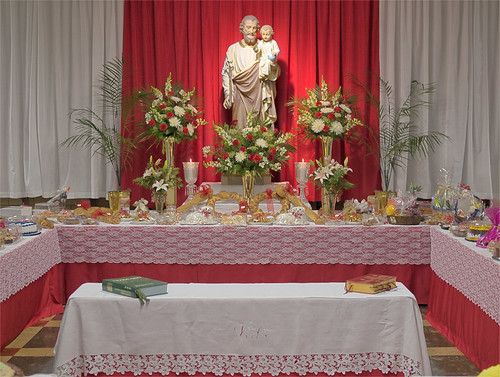
...a catalog of the tricks of the trade for writing fiction. We dip into the cauldron of story, whistle up a hearty spoonful and splosh it in front of you to devour to your heart's content.I was quickly fascinated. This website is definitely non-scholarly, and is often crude, poorly categorized, and obscure, filled with jargon; but there is a lot of good stuff in it. I've spent hours clicking around on that website, and was particularly taken by the entry Sliding Scale Of Idealism Versus Cynicism, which asks the question
Tropes are devices and conventions that a writer can reasonably rely on as being present in the audience members' minds and expectations....
What best defeats evil? A bullet between the eyes, or The Power Of Friendship?The article continues:
...Humans may act like bastards and the world may seem like it's half empty, but that doesn't mean that that the worst villain is beyond redemption, or that things can't be improved with hard work or even The Power Of Love. The forces of Good may have to go through Hell, but in the end they will Earn Their Happy Ending. May overlap with a Bittersweet Ending...The best works of fiction overwhelmingly choose this trope; perhaps because it is true. It is noted that it is difficult to write this this kind of happy ending effectively, but we should not be surprised, because life is difficult and takes hard work, even when writing fiction.
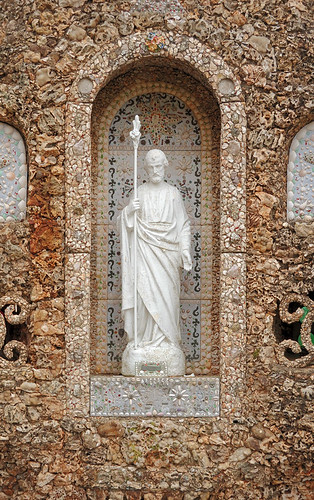
I took for my advocate and lord the glorious Saint Joseph and commended myself earnestly to him; and I found that this my father and lord delivered me both from this trouble and also from other and greater troubles concerning my honor and the loss of my soul, and that he gave me greater blessings than I could ask of him. I do not remember even now that I have ever asked anything of him which he has failed to grant. I am astonished at the great favours which God has bestowed on me through this blessed saint, and at the perils from which He has freed me, both in body and in soul.
— Autobiography of Saint Teresa of Avila.
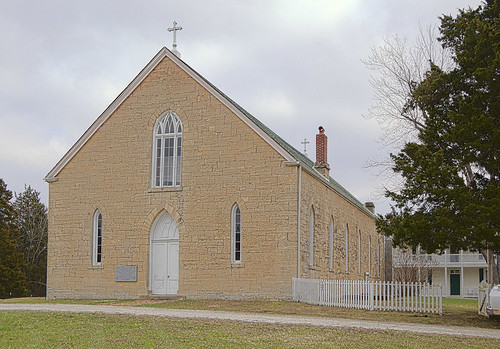
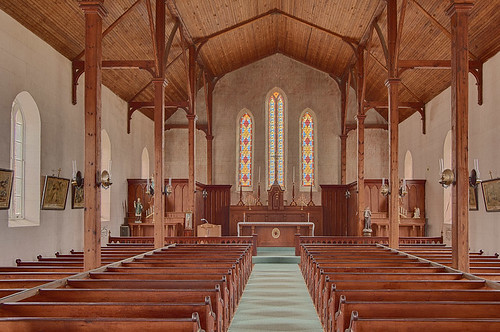
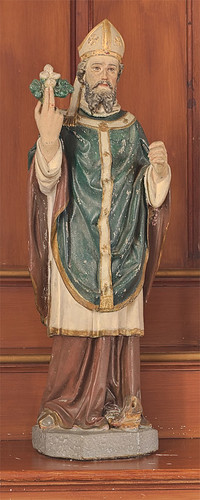
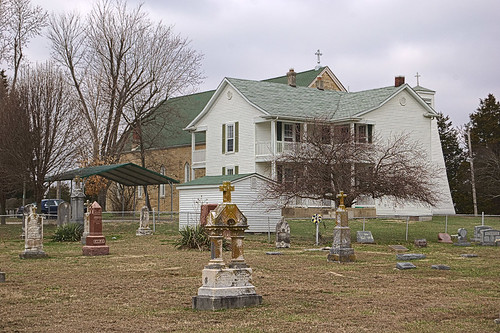
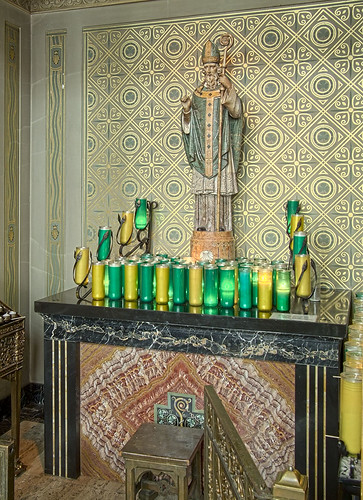
Could I have come to Ireland without thought of God, merely in my own interest? Who was it made me come? For here “I am a prisoner of the Spirit” so that I may not see any of my family. Can it be out of the kindness of my heart that I carry out such a labor of mercy on a people who once captured me when they wrecked my father's house and carried off his servants? For by descent I was a freeman, born of a decurion father; yet I have sold this nobility of mine, I am not ashamed, nor do I regret that it might have meant some advantage to others. In short, I am a slave in Christ to this faraway people for the indescribable glory of “everlasting life which is in Jesus Christ our Lord.”
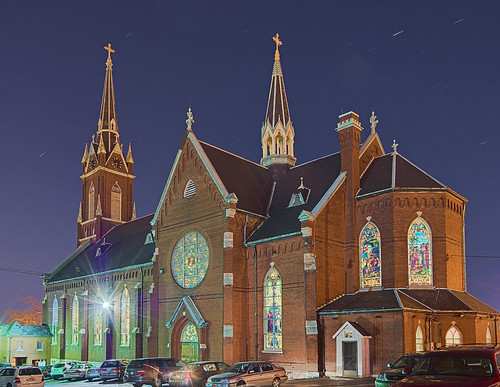
Parafia Św. Agaty została założona po to, by służyć duchowym potrzebom polskich emigrantów zamieszkujących okolice St. Louis. Parafia podlega bezpośrednio Arcybiskupowi St. Louis oraz Papieżowi. Żyjąc w amerykańskim społeczeństwie staramy się podtrzymywać i pielęgnować naszą bogatą tradycje. Poprzez wstawiennictwo Matki Boskiej Częstochowskiej, Królowej Polski oraz Św. Agaty, patronki naszej parafii, staramy się wypełnić powierzone nam przez Jezusa powołanie do życia w wierze katolickiej, miłości, sprawiedliwości i pokoju.This photo was taken with a series of long exposure times, and trails of stars can be seen in the sky. In preparation for the Stations of the Cross devotion, the church's lights were on inside, offering us an unusual view of the stained glass windows at night.

The German Catholic Church of St. Agatha was organized in 1871 by Rev. J. A. Stroomberger when he found about one hundred families in the area willing to subscribe a total of $5,000 towards the erection of a church. A lot at the northwest corner of Eighth and Utah Streets was purchased and the church was dedicated on July 14, 1872 by Bishop Ryan. The two story brick structure had a school on its first floor with an auditorium seating 450 persons on the second floor. The cornerstone of the present church was laid in 1885 and in 1899 the transept, sacristy and sanctuary were added to the structure. A nuns' residence was built in 1892 and a new school and hall was completed in 1908.


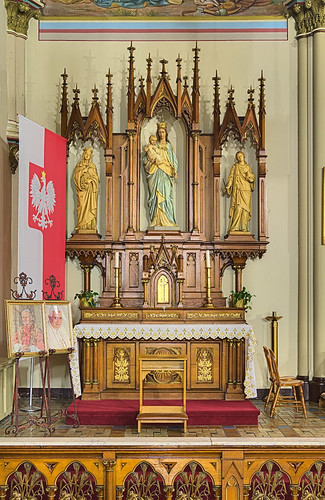
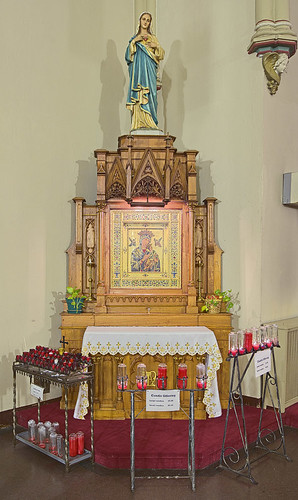
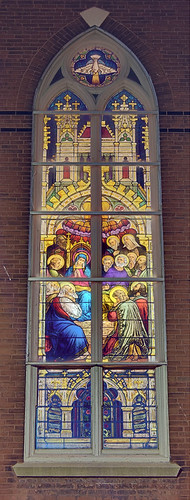
When the time for Pentecost was fulfilled, they were all in one place together. And suddenly there came from the sky a noise like a strong driving wind, and it filled the entire house in which they were. Then there appeared to them tongues as of fire, which parted and came to rest on each one of them.
— Acts 2
